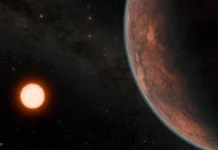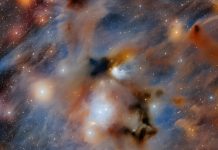
In a remarkable discovery, scientists have found that ancient stars were not just twinkling lights in the night sky but incredible factories that produced elements heavier than anything we find naturally on Earth.
This new research, diving into the depths of the universe, reveals that these stars could create elements with atomic masses over 260.
This finding is a giant leap in understanding how elements are formed in the cosmos.
Let’s break it down a bit. At the heart of every element is its atomic mass, determined by the number of protons and neutrons in its nucleus.
When we talk about light or heavy elements, we’re referring to this atomic mass.
Creating the heaviest elements in the universe is a high-stakes, high-energy game that happens in the most extreme environments: neutron stars.
Imagine a neutron star as a giant, dense orb packed with neutrons.
The rapid neutron capture process, or r-process, occurs here. It’s like a frenzied dance of atomic construction, where a nucleus catches a bunch of neutrons in less than a second.
These neutrons then change into protons; suddenly, you have a heavy element like gold or uranium.
But there’s a catch. These heavy elements are unstable. They’re like ticking time bombs, eventually breaking apart—a process known as fission.
Ian Roederer, an associate professor of physics and the lead author of the study, explains that to create elements heavier than lead or bismuth, you need a neutron-rich environment, which is typically found in neutron stars, either at their birth, death or when they collide.
The researchers wanted to understand more about this r-process, especially the limits of how heavy an element could get. To do this, they studied 42 ancient stars in the Milky Way known for containing heavy elements from past generations of stars.
By looking at the big picture of how these elements were distributed across these stars, rather than focusing on each star individually, they spotted some intriguing patterns.
These patterns hinted that elements like silver and rhodium, usually found in the middle of the periodic table, were probably leftovers from the fission of super-heavy elements.
The team concluded that the r-process could produce elements with an atomic mass of at least 260 before they split apart.
This discovery of atomic mass 260 is groundbreaking. We haven’t found elements that heavy in space or naturally on Earth, not even in nuclear tests.
Finding these elements in space is like having a new map to guide us in understanding the complex process of fission. It also sheds light on the diverse elements that make up everything in our universe.
In essence, this research expands our knowledge of the cosmos and brings us closer to answering some of the most fundamental questions about the origins of the elements that make up everything we know, including ourselves.



